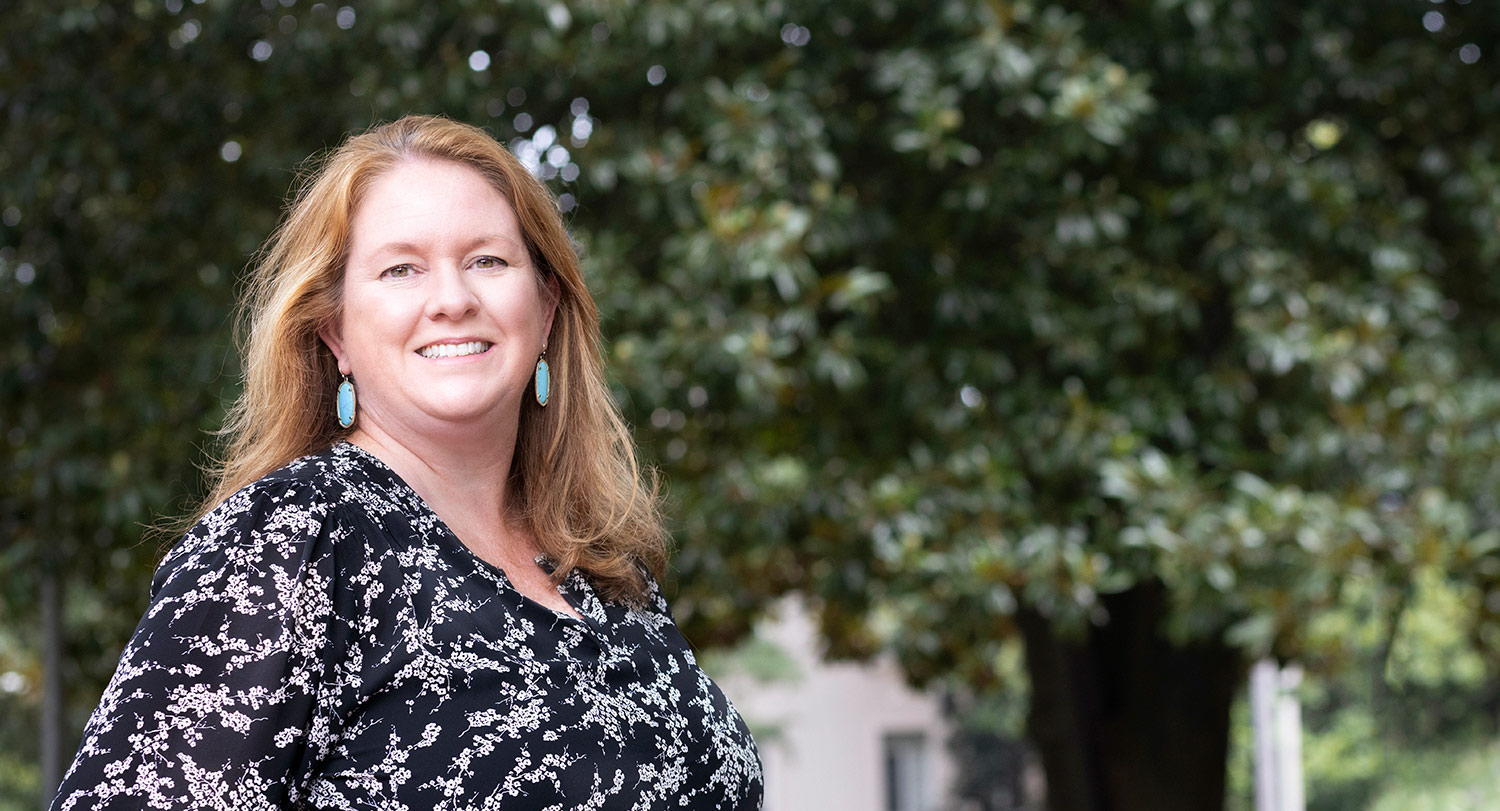
Kate Bernheisel has always had a knack for innovation, something that she has been able to combine with her passion for empathy and her career in health care.
“As a nurse, we're trained to think here and now and do it based on what we call evidence-based practice,” says Bernheisel, an assistant professor of nursing at USC. “But my brain was always running a little bit ahead and thinking, ‘All right, well, how can how can this be different and better?’”
Consider what she has created in her classroom at the USC College of Nursing — a Virtual Reality 360-degree video to immerse students in the life of a patient, allowing them to see first-hand some of the barriers their patients face. It’s one example of the forward thinking and tech savvy that resulted in her receiving the Garnet Apple award for teaching innovation.
As a nurse and family nurse practitioner, Bernheisel has worked in myriad health care situations. She’s served in community health centers, worked with homeless patients, and on staff in urgent care centers and other for-profit facilities. But she also always loved teaching — and innovating.
In 2018, she started working as adjunct faculty in nursing. “I just love it. I just really love students, and I love being able to communicate some of my experiences to them.”
“The ability to walk in a patient’s shoes, even if virtually, offers a powerful tool for developing empathy and understanding of the complex, non-medical factors that influence health outcomes.”
At USC, she teaches across nursing programs — undergraduates working on their initial degree to graduate students who may have been working in the nursing profession for 20 years. Her classes focus mostly on population health. She also teaches informatics.
With her interest in technology and innovation, Bernheisel sought to go beyond traditional online instruction and help nursing students understand a patient’s real-life experience.
“The ability to walk in a patient’s shoes, even if virtually, offers a powerful tool for developing empathy and understanding of the complex, non-medical factors that influence health outcomes,” she says. “My goal is to use innovative teaching methods that not only enhance clinical skills but also promote personal reflection and professional growth. By integrating video, VR simulations, immersive storytelling and scenario-based learning, I hope to prepare future nurses to deliver holistic, equitable and patient-centered care.”
Bernheisel created VR-compatible content using 360-degree cameras and interactive software, while carefully scripting the videos to make them realistic and educational. Her project portrayed a day in life of a wheelchair-dependent patient, showing some of the barriers such as navigating home and community life, managing medications and accessing health care.
She says the 360 videos seemed like the perfect way to immerse nursing students in the situation, but she hadn’t seen it done and had to figure out how to make it happen.
“There were a lot of great resources at USC through the Center for Teaching Excellence and the Office of Distributed Learning, and there were a lot of great people who were so helpful working on 360 video from a different perspective, either from a sports and entertainment perspective, media arts, teaching biology or from an artistic perspective,” she says. “So I leaned on them to try to get information on how to do this.”
She developed the entire experience in-house, showing how virtual reality and video-based learning experiences can be created with limited funding. The resulting videos can be watched on a computer screen or — preferably —on VR headsets, a tool that completely immerses the student in the activity.
“That was my ultimate goal, to get them in VR so that they feel like they are that patient, or they're as close as they can be to seeing the world through that patient's eyes,” she says.
She wants to train nurses to be able to see what needs to be improved when they enter various settings, wherever those might be.
“I've always had this idea of wanting to provide that other perspective,” she says. “And I want students to know, ‘OK, I can be an innovator, too.’ That's something that's been important to me, not only for me to personally innovate, but also to encourage students to do it, too.”